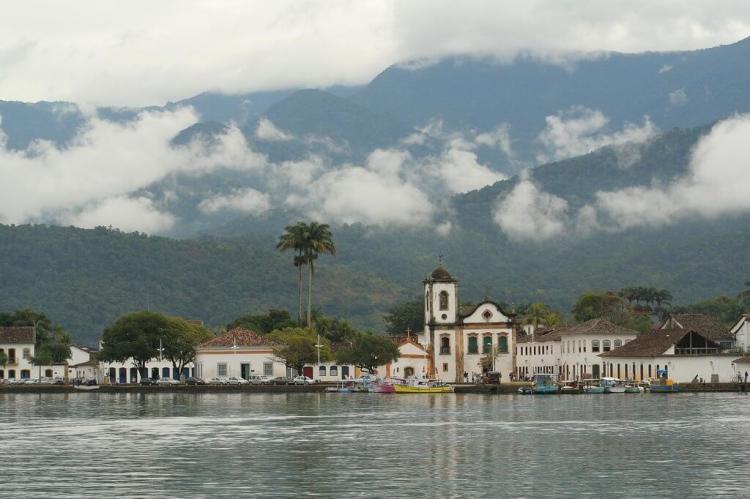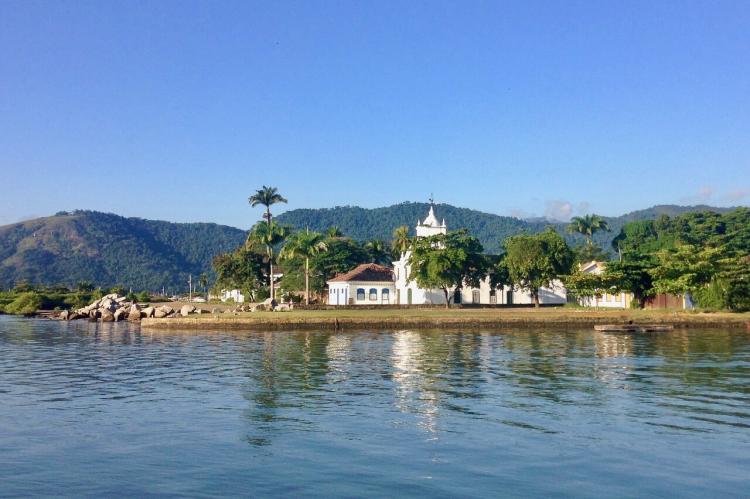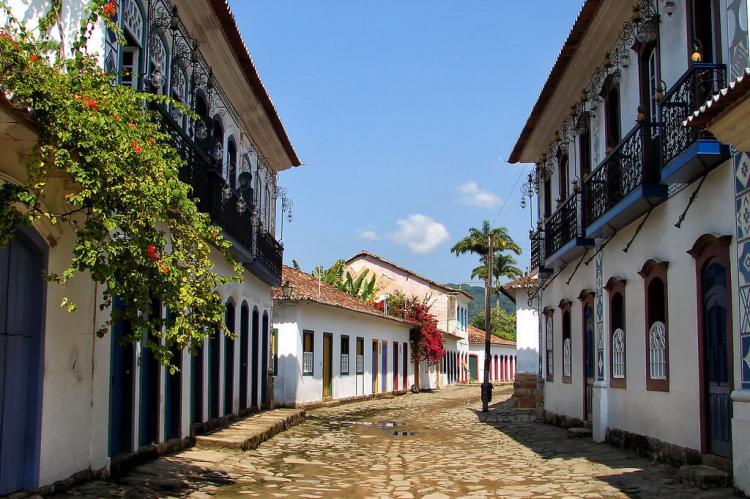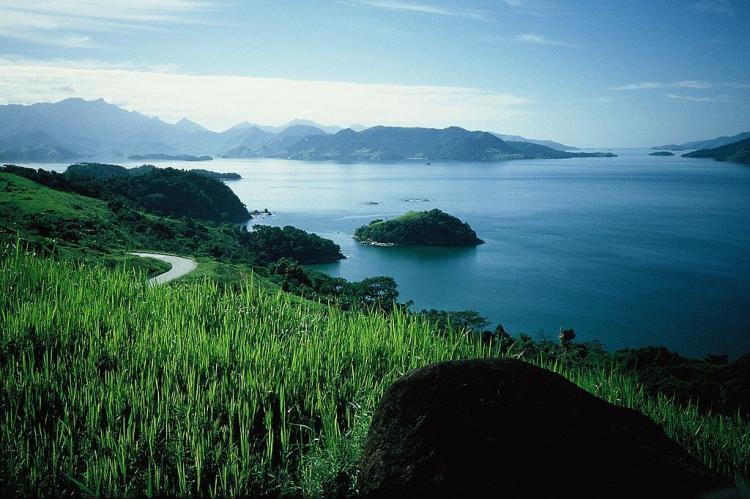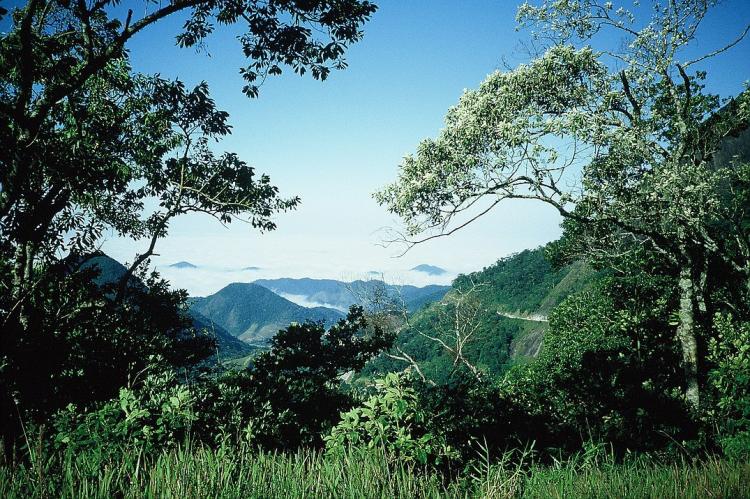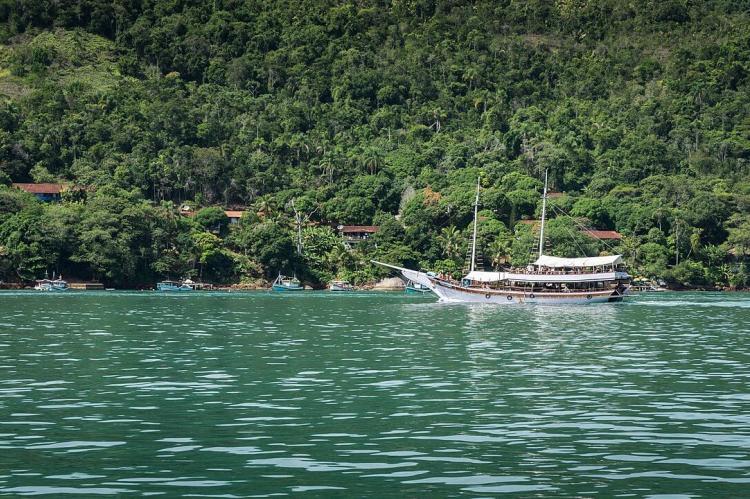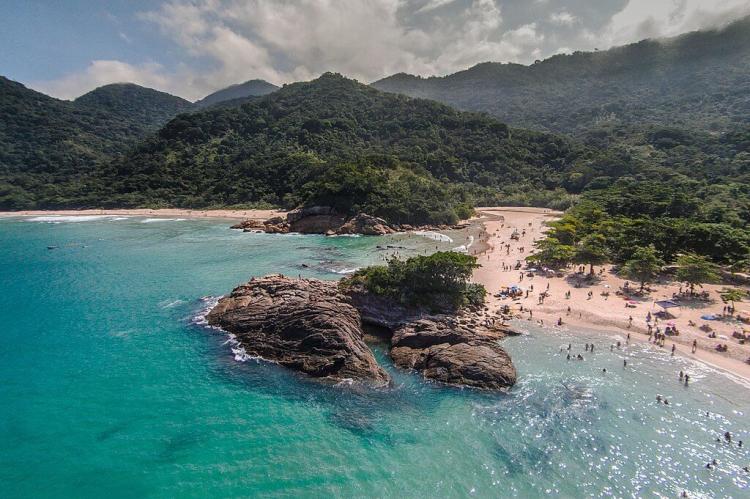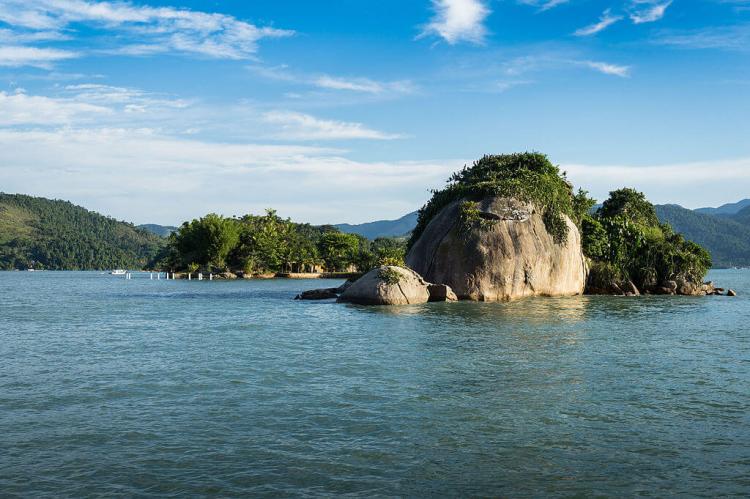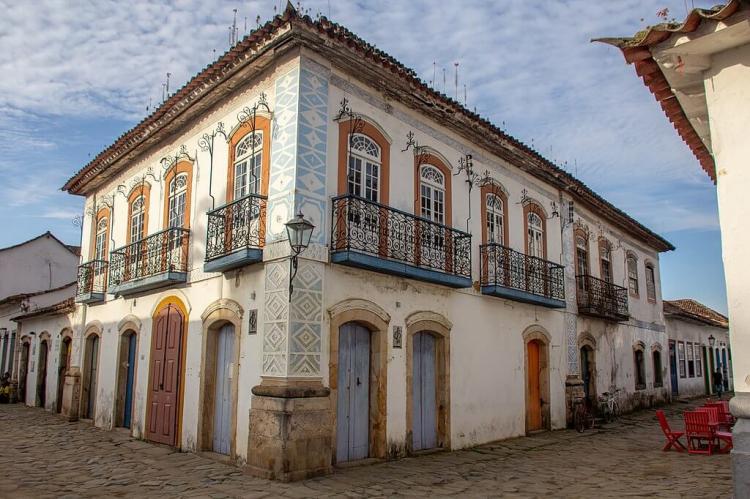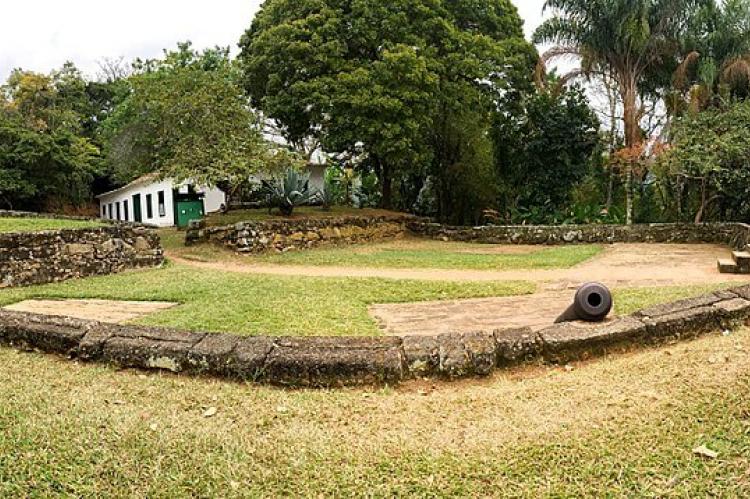Paraty and Ilha Grande – Culture and Biodiversity (Brazil)
Located between the Serra da Bocaina mountain range and the Atlantic Ocean, this cultural and natural landscape includes the historic center of Paraty, the island of Ilha Grande, as well as four protected natural areas of the Atlantic Forest, one of the world's critical biodiversity hotspots.
Paraty and Ilha Grande
"Culture and Biodiversity"
This World Heritage Site comprises 204,634 ha (505,661 acres), surrounded by a single buffer zone, including many small islands, beaches, and coves. It is located in the states of Rio de Janeiro and São Paulo and nestled in the majestic Serra do Mar, known locally as Serra da Bocaina.
Located between the Serra da Bocaina mountain range and the Atlantic Ocean, this cultural and natural landscape includes the historic center of Paraty, the island of Ilha Grande, as well as four protected natural areas of the Brazilian Atlantic Forest, one of the world's five critical biodiversity hotspots. It also includes part of the Serra da Bocaina mountain range and the Atlantic coastal region.
Two of the protected areas, Praia do Sul Biological Reserve and Ilha Grande State Park, which cover most of the largest island within the Bay, also contain cultural assets that testify to the occupation of the area by indigenous inhabitants and, from the 16th century onwards, by European settlers and enslaved Africans.
Serra do Mar and Ilha Grande Bay are home to an impressive diversity of animal species, some of which are threatened, such as the jaguar (Panthera onca), the white-lipped peccary (Tayassu pecari) and several primate species, including the Southern Muriqui (Brachyteles arachnoides).
In the late 17th century, Paraty was the end-point of the Caminho do Ouro (Gold Route), along which gold was shipped to Europe. Its port also served as an entry point for tools and enslaved Africans sent to work in the mines. A defense system was built to protect the wealth of the port and the town.
This World Heritage property comprises six component parts, including four protected areas.
Serra da Bocaina National Park
Serra da Bocaina National Park comprises an area of approximately 104,000 ha (260,000 acres) with significant biodiversity. A portion of the Caminho do Ouro (Gold Route) is within its boundaries. The park headquarters is in São José do Barreiro, State of São Paulo.
The Chico Mendes Institute for Biodiversity Conservation administers it. It is estimated that 60% of the vegetation comprises native Atlantic Forest, with the balance a regenerated (secondary) forest. The highest point is Pico do Tira o Chapéu, which reaches 2,088 m (6,850 ft) a.s.l., one of the highest points of the State of São Paulo.
Among the species of flora are pines, cedars, trumpet trees, palm trees and bromeliads. The park's fauna includes cats, sloths, deer, monkeys, snakes, and birds. Some amphibians are only known from the park and its buffer area: Brachycephalus vertebralis, Ischnocnema pusilla, Bokermannohyla ahenea, Bokermannohyla clepsydra, Scinax ariadne, Megaelosia bocainensis, Physalaemus barrioi, and Paratelmatobius gaigeae.
Cairuçu Environmental Protected Area
The Cairuçu Environmental Protected Area protects a vital remnant of the Atlantic Forest biome, including the various transitions from coastal mangroves to humid tropical forests on the hillsides. Its purpose is to preserve nature, scenic landscapes, fauna, flora and water systems, as well as the traditional communities of caiçaras, quilombolas and indigenous people.
Protected species include southern muriqui (Brachyteles arachnoides), buffy-tufted marmoset (Callithrix aurita), oncilla (Leopardus tigrinus), green sea turtle (Chelonia mydas), sea ginger coral (Millepora alcicornis), catfish (Trichogenes longipinnis), black-capped piprites (Piprites pileata), white-necked hawk (Leucopternis lacernulatus), brown-backed parrotlet (Touit melanonotus) and Chaco eagle (Harpyhaliaetus coronatus).
Ilha Grande State Park
Ilha Grande State Park, located on the island of Ilha Grande and within the area of the Bocaina Mosaic of protected areas, covers 62.5% of the island, with an area of 12,072 ha (29,830 acres). The island comprises mountains with small plains irrigated with dozens of clear water streams, pools, rapids, and waterfalls.
Atlantic Forest covers more than 90% of the park. There are also restingas, heaths and mangroves. The surrounding marine habitat supports a rich marine life. The island has eight beautiful beaches, separated by a section of rocky shore and cliffs that plunge into the sea.
There are archaeological remains, an old lighthouse, aqueduct, dam and hydroelectric power plant, the ruins of two prisons, stone paths from the colonial era and several ruined farmhouses.
Praia do Sul Biological Reserve
Praia do Sul Biological Reserve, located on the island of Ilha Grande, the 3,502 ha (8,650 acres) reserve is open only for educational or research purposes.
About half of the reserve is covered in dense Atlantic Forest, with many species of flora and fauna, including parrots, otters, woodpeckers, shore birds, monkeys, armadillos, pacas and reptiles. There is a rich variety of trees and extensive mangroves.
The Historic Center of Paraty
Paraty is one of the best-preserved colonial coastal towns in Brazil. It has retained its 18th-century plan and much of its colonial architecture dating from the 18th and early 19th centuries.
Morro da Vila Velha
Morro da Vila Velha is where the archaeological remains of Defensor Perpétuo Fort are found. First built in 1703 and rebuilt in 1822, its original purpose was to defend the gold passing through Paraty's port from pirate raids.
Paraty
The village of Paraty (or Parati) was founded in 1597. Portuguese colonists established it formally as a town in 1667 in a region populated by the Guaianás Indians. The Guaianás people who lived where the city now stands called the entire area "Paraty." In Tupi, "Paraty" means "river of fish."
Even today, the Brazilian Mullet (Mugil brasiliensis) still comes back to spawn in the rivers that spill into the Bay of Paraty. When the Portuguese colonized the region, they adopted the Guaianás name for their new town.
In the late 17th century, Paraty was the end-point of the Caminho do Ouro (Gold Route), along which gold was shipped to Europe. Its port also served as an entry point for tools and enslaved Africans sent to work in the mines. A defense system was built to protect the wealth of the port and the town. The Historic Center of Paraty has retained its 18th-century plan and much of its colonial architecture dating from the 18th and early 19th centuries.
Paraty is home to an impressive diversity of species, some of which are threatened, such as the jaguar (Panthera onca), the white-lipped peccary (Tayassu pecari) and several primate species, including the woolly spider monkey (Brachyteles arachnoides), which are symbolic of the site.
The town is on the Bay of Ilha Grande, dotted with many tropical islands. Rising as high as 1,300 m (4,265 ft) behind the city are tropical forests, mountains and waterfalls. It is the southernmost and westernmost city in Rio de Janeiro state.
The National Historic and Artistic Heritage Institute (IPHAN), a heritage register of the Brazilian government, lists Paraty as a National Historic Landmark. Conservation units protect more than 80% of its territory:
-
Cairuçu Environmental Protection Area, where the village of Trindade is located
-
Tamoios Ecological Station
-
Serra da Bocaina National Park
-
Baia de Paraty, Paraty Mirim and Saco do Mamanguá Environmental Protection Area
-
Juatinga Ecological Reserve
Nearby is the Serra do Mar State Park of São Paulo. The municipality also includes an indigenous village and an Afro-Brazilian quilombo settlement.
Ilha Grande
Ilha Grande ("Big Island") is an island that remains undeveloped, mainly off the coast of Rio de Janeiro state, Brazil. Most of its territory is within the Ilha Grande State Park. The remainder of the island is subject to stringent development restrictions.
For almost a century, it was closed by the Brazilian government to free movement or settlement because it first housed a leper colony and then a top-security prison. Cândido Mendes, a high-security prison, housed some of the most dangerous prisoners within the Brazilian penal system. It was closed in 1994. The largest village on the island is called Vila do Abraão, with approximately 1900 inhabitants.
The island, which is 193 sq km (75 sq mi) in area, is now a popular tourist destination for its scenic beauty, pristine tropical beaches, luxuriant vegetation and rugged landscape. The highest point is the 1,031 m (3,383 ft) Pico da Pedra D'Água.
Ilha Grande is one of the most pristine remnants of Brazil's Atlantic Forest, making it one of the richest ecosystems in the world. As a hotspot for biodiversity and conservation, Ilha Grande holds some of the largest remaining populations of many endangered species, including the red-ruffed fruit crow (Pyroderus scutatus), the brown howler monkey (Alouatta fusca), the maned sloth (Bradypus torquatus) the red-browed amazon parrot (Amazona rhodocorytha), and the broad-snouted caiman (Caiman latirostris).
The seas around the island, which are also protected, feature a unique convergence of tropical, subtropical and temperate-zone marine life. The waters are home to corals and tropical fish, including sharks, sea turtles, Magellanic penguins and cetaceans (marine mammals) such as southern right, humpback, Bryde's, orca, and dolphins.
The islands are within the 12,400 ha (31,000 acres) Tamoios Environmental Protection Area. The island also contains the Aventureiro Sustainable Development Reserve, which was later integrated with the Praia do Sul Biological Reserve. The Ilha Grande State Park covers 62.5% of the island. The combined total of protected areas amounts to 87% of the island.
